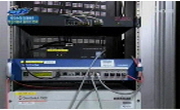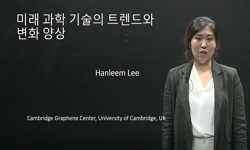본 논문의 분석결과는 다음과 같다. 첫째, 환경부가 1991년부터 매년 조사, 발표하고 있는 「대기오염물질배출량」은 난방, 산업, 수송 및 발전의 4부문으로 분류되어 있어 자료의 활용가치가...
http://chineseinput.net/에서 pinyin(병음)방식으로 중국어를 변환할 수 있습니다.
변환된 중국어를 복사하여 사용하시면 됩니다.
- 中文 을 입력하시려면 zhongwen을 입력하시고 space를누르시면됩니다.
- 北京 을 입력하시려면 beijing을 입력하시고 space를 누르시면 됩니다.

대기오염 배출량 변화의 경제적 요인 분해 = An Economic Factor Analysis of Air Pollutants Emission Using Index Decomposition Methods
한글로보기https://www.riss.kr/link?id=A45034380
- 저자
- 발행기관
- 학술지명
- 권호사항
-
발행연도
2005
-
작성언어
Korean
- 주제어
-
KDC
539
-
등재정보
KCI등재
-
자료형태
학술저널
-
수록면
167-199(33쪽)
-
KCI 피인용횟수
2
- 제공처
-
0
상세조회 -
0
다운로드
부가정보
국문 초록 (Abstract)
본 논문의 분석결과는 다음과 같다. 첫째, 환경부가 1991년부터 매년 조사, 발표하고 있는 「대기오염물질배출량」은 난방, 산업, 수송 및 발전의 4부문으로 분류되어 있어 자료의 활용가치가 매우 낮아 조사 통계 내용의 다양화 및 산업분류기준이 개선되어야 한다. 둘째, 대기오염 대량배출산업은 석탄·석유(s7), 전력·가스(s17), 운송·보관(s20) 산업이다. 이들 산업에 대한 기존의 대기규제정책은 다른 산업fl 비해 비효율적이었다고 볼 수 있으며 향후 대기정책에서도 유념하여야 할 사항으로 여겨진다. 셋째, 시멘트·석회·석제(s10), 전력·가스(s17) 산업은 대량의 오염배출산업인 동시에 배출 유발효과도 상대적으로 가장 큰 산업이다. 넷째, 배출량 변화의 가장 큰 감소요인은 배출계수의 변화(Δf)이며, 가장 큰 증가요인은 경제성장 효과 (Δy)였다 생산 또는 투입기술의 변화(ΔD), 수요구조의 변화(Δu)는 배출량 증감에 미치는 영향이 산업별로 다르게 나타났으나 그 영향은 미미하였다. 다섯째, 대기오염 총량관리제 도입, 고(혼)오염산업의 차별관리 및 환경과 경제의 상생을 위한 대기정책의 효율적 시행을 위해서는 산업별 배출량 기본자료의 산정 방법 개선 및 경제적 분석과 평가 기준의 활용, 확대가 필요하다. 여섯째, 1990년대 한국의 경제성장은 1960~1970년대와 같이 배리 코머너 가설에 상응한 오염 지향적 경제성장은 아니었으나 산업 전체의 기술 및 수요구조가 환경친화적이라 할 수도 없었다. 이것은 대기환경 개선을 위한 환경정책이 오직 환경당국의 환경정책수단에만 의존했을 뿐이며 국가경제 전체의 산업구조나 친환경 생산기술의 발전 등 범정부적 차원의 환경정책이 병행되지 못했음을 시사한다.
다국어 초록 (Multilingual Abstract)
The following policy implications can be drawn from this study: 1) The Air Pollution Emission Amount Report published by the Ministry of Environment since 1991 classifies industries into 4 sectors, i. e., heating, manufacturing, transportation and pow...
The following policy implications can be drawn from this study: 1) The Air Pollution Emission Amount Report published by the Ministry of Environment since 1991 classifies industries into 4 sectors, i. e., heating, manufacturing, transportation and power generation. Currently, the usability of report is very low and extra efforts should he given to refine the current statistics and to improve the industrial classification. 2) Big pollution industries are as follows - s7, s17 and s20. The current air pollution control policy for these sectors compared to other sectors are found to be inefficient. This finding should be noted in the implementation of future air pollution policy. 3) s10 and s17 are found to be a big polluting industrial sector and its pollution reduction effect is also significant. 4) The effect of emission coefficient (Δf) has the biggest impact on the reduction of emission amount change and the effect of economic growth coefficient (Δy) has the biggest impact on the increase of emission volume. The effect of production technology factor (ΔD) and the effect of the change of the final demand structure (Δu) are insignificant in terms of the change of emission volume 5) Further studies on emission estimation techniques on each industry sector and the economic analysis are required to promote effective enforcement of the total volume control system of air pollutants, the differential management of pollution causing industrial sectors and the integration of environment and economy. 6) Korea's economic growth in 1990 is not pollution-driven in terms of the Barry Commoner's hypothesis, even though the overall industrial structure and the demand structure are not environmentally friendly. It indicates that environmental policies for the improvement of air quality depend mainly on the government initiatives and systematic national level consideration of industrial structures and the development of green technologies are not fully incorporated.
목차 (Table of Contents)
- Ⅰ. 서론
- Ⅱ. 주요 선행연구
- Ⅲ. 배출량 변화의 요인분석 방법
- Ⅳ. 대기오염물질 배출량 변화요인 분해 결과
- Ⅴ. 대기오염물질 배출량 변화요인 분석 결과 종합
- Ⅰ. 서론
- Ⅱ. 주요 선행연구
- Ⅲ. 배출량 변화의 요인분석 방법
- Ⅳ. 대기오염물질 배출량 변화요인 분해 결과
- Ⅴ. 대기오염물질 배출량 변화요인 분석 결과 종합
- Ⅵ. 결론
참고문헌 (Reference)
1 "환경오염방지대책에 관한 경제학적 고찰" 서울대학교 환경대학원 6182-, 1982
2 "환경규제와 산업연관모형" 한울 아카데미 1999
3 "환경규제에 따른 한국 제조업의 구조변화 산업공해의 요인과 환경규제의 효과분석" 4 (4): 307-344, 1995
4 "환경규제가 경쟁력에 미치는 영향 연구" 한국환경정책·평가연구원 1999
5 "환경개선촉진을 위한 정책 발전방안 연구 보고서 국제무역경영연구원" 1991.
6 "한국 제조업에 대한 환경규제의 파급효과 분석 : 생산성 및 요소수요를 중심으로" 45 (45): 275-287, 1997
7 "한·일간 무역흐름에 의한 배출이전과 국제환경협력이 산업무역에 미친 영향" 8 : 5-31, 2002
8 "탄소세부과와 한국산업의 가격구조 분석" 4 (4): 113-150, 1995
9 김일중, "탄소세가 철강·금속산업에 미치는 효과" 45 (45): 1996
10 "주요국의 개방경제 지속가능성과 그 변동요인분석" 7 (7): 2001
1 "환경오염방지대책에 관한 경제학적 고찰" 서울대학교 환경대학원 6182-, 1982
2 "환경규제와 산업연관모형" 한울 아카데미 1999
3 "환경규제에 따른 한국 제조업의 구조변화 산업공해의 요인과 환경규제의 효과분석" 4 (4): 307-344, 1995
4 "환경규제가 경쟁력에 미치는 영향 연구" 한국환경정책·평가연구원 1999
5 "환경개선촉진을 위한 정책 발전방안 연구 보고서 국제무역경영연구원" 1991.
6 "한국 제조업에 대한 환경규제의 파급효과 분석 : 생산성 및 요소수요를 중심으로" 45 (45): 275-287, 1997
7 "한·일간 무역흐름에 의한 배출이전과 국제환경협력이 산업무역에 미친 영향" 8 : 5-31, 2002
8 "탄소세부과와 한국산업의 가격구조 분석" 4 (4): 113-150, 1995
9 김일중, "탄소세가 철강·금속산업에 미치는 효과" 45 (45): 1996
10 "주요국의 개방경제 지속가능성과 그 변동요인분석" 7 (7): 2001
11 "전력요금조정의 거시경제적 효과" 2 (2): 21-40, 1996
12 박성현, "우리나라 환경통계의 작성실태 및 발전방향" 환경통계발전세미나 통계청 1995.
13 "외국무역개황" 2001
14 손양훈, "연산일반균형모형의 개발 및 응용 : 전기요금의 경제적 효과에 관한 연구" 96 (96): 1996
15 김성래·, "에너지부문을 고려한 한국경제의 일반균형 모형화" 5 (5): 1-39, 1995
16 "에너지경제연구원 에너지통계연보" 1990.
17 신동천, "수입재와 국내재의 대체탄력성에 관한 연구" 한국경제학회 44 (44): 101-118, 1996
18 "산업연관표를 이용한 우리나라 산업의 CO2 배출변화 요인분해" 2002
19 "산업발전과 환경오염에 관한 경제학적 분석 성균관대학교 한국산업연구소" 1979.
20 "산업공해의 요인과 환경규제의 효과 분석" 371408-, 1994
21 "배연탈황의 경제적 효과" 5 (5): 87-108, 1996
22 "무역·투자상의 문제점과 요망 : 아시아태평양국가" 1998
23 "대기환경기준의 개선에 따른 편익분석" 경기대 한국산업경제연구소 13 : 123-150, 2001
24 "대기오염물질 배출량" 2000
25 "대기오염 규제제도의 산업별 영향과 효율적 개선방안" 산업연구원 1998
26 안수웅, "기후변화협약이 거시경제와 주요산업에 미치는 영향" 2000
27 "기후변화협약 및 교토의정서 대응전략 연구" 2000
28 "기후변화협약 대응 실천계획 수립을 위한 연구" 1997
29 "국제무역과 환경문제에 대한 이론연구 및 무역연계논의 동향에 대한 대응방안연구" 경기대 한국산업경제연구소 14 : 113-150, 2001
30 신의순, "국가정책수립을 위한 환경통계의 활용" 통계청 1995.
31 "거시환경경제모형개발에 관한 연구Ⅰ" 13-, 1998
32 "産業の中間投入に係る內外價格調査" 2000
33 "『산업연관표』" 1995.
34 "『對外經濟政策 基本理念』" 2001
35 "The Tulsa SMSA as a Case Study" 15 : 327349-, 1984
36 "The Impact of Environmental Regulations on Industry Productivity Journal of Environmental Economics and Management" 18 : 5065-, 1990
37 "The Control of CO2 Emissions and its Economic Impact An AGE Model for a German State" 1991.
38 "Taiwan's Accession into the WTO and Trade in Services: A Computable General Equilibrium Analysis" 2001
39 "Structure of the World Economy" 823834-, 1974
40 "SO2, NO2 등 배출허용기준강화와 비용편익분석 및 환경기준과의 상관관계분석" 경기대 한국산업경제연구소 241-266, 2001
41 "Review of Economics and Statistics" 2 : 262271-, 1970
42 "Pricing Problems in an Input-Output Approach to Environment Protection The Review of Economic and Statistics" 110117-,
43 "Pollution and the Struggle for the World Product" Cambridge University Press. 1988.
44 "Measuring the Costs of Environmental Damage A Review of Methodological Approaches with an Application to Bangkok" OECD Development Centre 1992.
45 "Journal of Economic Literature" 1992.
46 "Institute of Developing Economies" 19851991.
47 "Industrial Structure and Source of Carbon Dioxide Emissions in East Asia: Estimation and Comparison" Multi-Science Publishing Co. Ltd 9 (9): 1998
48 "Factorizing Changes in Energy and Environmental Indicators through Decomposition" 23 (23): 489-495, 1998
49 "Environmental Regulation and its Effects on Total Factor Productivity : The Case of Korean Industries" 2003
50 "Environmental Regulation and Development: A Cross-Country Empirical Analysis" World Bank N.B.E.R. 1995.
51 "Emission and Transmission of Carbon Dioxide via International Trade The Case of Japan and Korea" 한국국제경제학회 191-214, 1999.12
52 "Economic Instruments in Environmental Policy Lessons from OECD Experience and Relevance to Economies in Transition Paper Presented at the Workshop on Managing the Environment with Rapid Industrialization Lessons from the East Asian Experience" ha (ha): 1993.
53 "Econometric Methods for Modeling Producer Behavior in Handbook of Econometrics" North-Holland iii : 2-, 1986app.1841∼1915.
54 "An Input-Output Analysis of the Costs of Air Pollution Control" 21 : 1974.
55 "A Residual-free Decomposition of the Source of Carbon Dioxide Emissions A Case of the Korean Industries" 26 (26): 15-30, 2001
56 "A New Energy Decomposition Method : Perfect in Decomposition and Consistent in Aggregation" 26 : 537-548, 2001
57 "A Generalized Input-output Model of an Economy with Environmental Protection Review of Economics and Statistics" 64 : 466473-, 1982
58 "A General Equilibrium Analysis of Chile" OECD Development Centre 1993.
동일학술지(권/호) 다른 논문
-
Choice Experiments의 합리성 제고 및 타당성 검증을 위한 설문지 디자인 연구
- 한국환경경제학회 한국자원경제학회
- 김용주
- 2005
- KCI등재
-
- 한국환경경제학회 한국자원경제학회
- 장정인
- 2005
- KCI등재
-
- 한국환경경제학회 한국자원경제학회
- 권오상
- 2005
- KCI등재
-
- 한국환경경제학회 한국자원경제학회
- 신영철
- 2005
- KCI등재
분석정보
인용정보 인용지수 설명보기
학술지 이력
| 연월일 | 이력구분 | 이력상세 | 등재구분 |
|---|---|---|---|
| 2027 | 평가예정 | 재인증평가 신청대상 (재인증) | |
| 2021-01-01 | 평가 | 등재학술지 유지 (재인증) |  |
| 2018-01-01 | 평가 | 등재학술지 유지 (등재유지) |  |
| 2015-01-01 | 평가 | 등재학술지 유지 (등재유지) |  |
| 2011-01-01 | 평가 | 등재학술지 유지 (등재유지) |  |
| 2009-01-01 | 평가 | 등재학술지 유지 (등재유지) |  |
| 2007-01-01 | 평가 | 등재학술지 유지 (등재유지) |  |
| 2006-07-27 | 학술지등록 | 한글명 : 자원환경경제연구외국어명 : Environmental and Resource Economics Review |  |
| 2004-01-01 | 평가 | 등재학술지 선정 (등재후보2차) |  |
| 2003-01-01 | 평가 | 등재후보 1차 PASS (등재후보1차) |  |
| 2001-07-01 | 평가 | 등재후보학술지 선정 (신규평가) |  |
학술지 인용정보
| 기준연도 | WOS-KCI 통합IF(2년) | KCIF(2년) | KCIF(3년) |
|---|---|---|---|
| 2016 | 0.45 | 0.45 | 0.45 |
| KCIF(4년) | KCIF(5년) | 중심성지수(3년) | 즉시성지수 |
| 0.47 | 0.45 | 0.778 | 0.04 |




 ScienceON
ScienceON KISS
KISS






